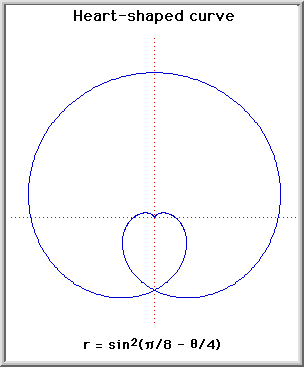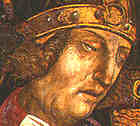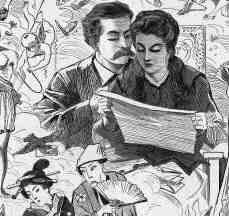1936 Jack “Machine Gun” McGurn, who, on behalf
of Al Capone had organized the Valentine's Day Massacre of 7 of Bugs Moran's
men, is killed by a burst of machine-gun fire from Moran in a crowded bowling
alley. Moran would never be charged with this murder.
^
1929 Pete Gusenberg, Frank Gusenberg, Johnny May, James Clark,
Adam Heyer, Al Weinshank, and Dr. Reinhardt H. Schwimmer: St. Valentine’s
Day Massacre ordered by Al Capone.
In Chicago, the first organized crime massacre of national notoriety
occurs when gunmen in the employment of gangster Al Capone murder
seven members of the "Bugs" Moran gang in a garage on North Clark
Street. Al Capone, born in New York, had come to Chicago in the early
years of Prohibition and joined organized crime boss John Torrio in
the establishment of a lucrative bootleg alcohol business. After murdering
most of his opponents, "Scarface" Capone took over from Torrio, and
built a powerful crime syndicate that received tribute from businessmen
and politicians and controlled gambling and prostitution in Chicago.
However, in the late 1920s, Capone’s absolute rule over the city’s
organized crime was still contested by an old Chicago rival, George
"Bugs" Moran, the head of the North Siders gang. In February of 1929,
Capone ordered Moran and his gang eliminated.
"Machine
Gun" McGurn was given complete control of the hit. McGurn put together
a first rate team of out-of-towners. Fred "Killer" Burke was the leader
and was assisted by gunman James Ray. Two other important members
of the team were John Scalise and Albert Anselmi who had been used
in the murder of Frankie Yale. Joseph Lolordo was another, as were
Harry and Phil Keywell from Detroit's Purple Gang. McGurn, like Capone,
wanted to be far away from the scene of the crime so he took his girlfriend
Louise Rolfe and checked into a hotel. Later he married her so that
she would not be able to testify against him.
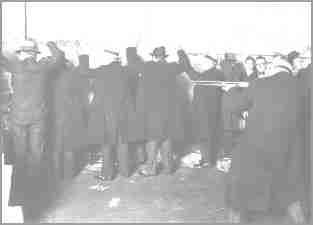 On February 14, St. Valentine’s Day, Capone’s hit men lured the Moran
gang to a garage on North Clark Street with an offer of buying some
high quality whiskey at a low price. After the Moran gang arrived,
the assassination squad, dressed in police uniforms, entered the garage
pretending to be police raiders. The seven North Siders, apparently
caught red-handed, lined up against the wall obediently. Moments later,
Capone’s men opened fire, killing six of the men instantly and fatally
wounding the seventh. "Bugs" Moran himself, who was late for the meeting,
spotted the assassins entering the garage in their police uniforms,
and thus was able to escape.
On February 14, St. Valentine’s Day, Capone’s hit men lured the Moran
gang to a garage on North Clark Street with an offer of buying some
high quality whiskey at a low price. After the Moran gang arrived,
the assassination squad, dressed in police uniforms, entered the garage
pretending to be police raiders. The seven North Siders, apparently
caught red-handed, lined up against the wall obediently. Moments later,
Capone’s men opened fire, killing six of the men instantly and fatally
wounding the seventh. "Bugs" Moran himself, who was late for the meeting,
spotted the assassins entering the garage in their police uniforms,
and thus was able to escape.
One
of the seven victims was Johnny May, an ex-safecracker who had been
hired by George "Bugs" Moran as an auto mechanic. He was working on
a truck that morning, with his dog tied to the bumper, while six other
men waited for the truck of hijacked whiskey to arrive. The men were
Frank and Pete Gusenberg, who were supposed to meet Moran and pick
up two empty trucks to drive to Detroit and pick up smuggled Canadian
whiskey; James Clark, Moran's brother-in-law; Adam Heyer; Al Weinshank;
and Reinhardt Schwimmer, a young optometrist who had befriended Moran
and hung around the liquor warehouse just for the thrill of rubbing
shoulders with gangsters.
The
story of the so-called "St.
Valentine’s Day Massacre" garners national attention, and Al Capone,
the obvious perpetuator of the deed, becomes a household name. Although
Capone himself was in Florida at the time, and little is found to
directly connect him to the crime, his new notoriety encourages various
law enforcement agencies to step up their investigation of the elusive
crime boss.
The mob hit known
as the St.
Valentine’s Day Massacre took place in Chicago on this day. In
order to perpetrate the hit, members of Al Capone’s gang reportedly
fitted a Cadillac touring sedan to the specifications of the Chicago
police department. Under the guidance of Capone lieutenant Ray Nitty,
the murderers sought out the garage of one "Bugs" Moran with the intention
of killing him. Fearing the possibility of misidentifying Mr. Moran,
the henchman killed all seven of the men in the garage. Without the
help of their modern-day Trojan Horse—the Cadillac Sedan which gang
member Bryan Bolton claimed to have personally purchased from the
Cadillac Car Company on Michigan Avenue in Chicago — the gang
would not have been able to infiltrate "Bugs" Moran’s garage with
such ease.
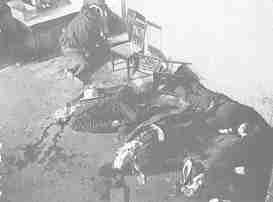 In Chicago, gunmen in the suspected employment of organized-crime
boss Al Capone murder seven members of the George "Bugs" Moran North
Siders gang in a garage on North Clark Street. The so-called St. Valentine's
Day Massacre stirred a media storm centered on Capone and his illegal
Prohibition-era activities and motivated federal authorities to redouble
their efforts to find evidence incriminating enough to take him off
the streets.
In Chicago, gunmen in the suspected employment of organized-crime
boss Al Capone murder seven members of the George "Bugs" Moran North
Siders gang in a garage on North Clark Street. The so-called St. Valentine's
Day Massacre stirred a media storm centered on Capone and his illegal
Prohibition-era activities and motivated federal authorities to redouble
their efforts to find evidence incriminating enough to take him off
the streets.
Alphonse Capone
was born in Brooklyn in 1899, the son of Italian immigrants from Naples.
The fourth of nine children, he quit school after the sixth grade
and joined a street gang. He became acquainted with Johnny Torrio,
a crime boss who operated in Chicago and New York, and at the age
of 18 Capone was employed at a Coney Island club owned by gangster
Frankie Yale. It was while working there that his face was slashed
in a brawl, earning him the nickname "Scarface."
In 1917, his girlfriend became pregnant and they married, and the
couple moved with their son to Baltimore, where Capone attempted a
respectable life working as a bookkeeper. In 1921, however, his old
friend Johnny Torrio lured him to Chicago, where Torrio had built
up an impressive crime syndicate and was beginning to make a fortune
on the illicit commerce of alcohol, which was banned in 1919 by the
18th Amendment to the Constitution. Capone demonstrated considerable
business acumen and was appointed manager of a Torrio speakeasy. Later,
Torrio put him charge of the suburb of Cicero. Unlike his boss, who
was always discreet, Capone achieved notoriety as he fought for control
of Cicero and was even tried (unsuccessfully) for murder.
In 1925, Torrio was shot four times by Bugs Moran and Hymie Weiss,
who were associates of a gangster slain by Torrio's men. Torrio lived,
but four weeks later he appeared in court and was sentenced to nine
months stemming from a police raid of a brewery he owned. About a
month later, he called Capone from jail to tell him that he was retiring
and handing the business over to him.
Capone moved his headquarters to the luxurious Metropole Hotel, where
he became a visible figure in Chicago public life as his crime empire
steadily expanded. After a prosecutor was killed by some of Capone's
henchmen, the Chicago police moved aggressively against his criminal
operations, but they couldn't make any charges stick. Capone bought
a luxurious estate in Miami as a retreat from all this unwanted attention.
Capone was in Florida in February
1929 when he gave the go-ahead for the assassination of Bugs Moran.
On 13 February, a bootlegger called Moran and offered to sell him
a truckload of high quality whiskey at a low price. Moran took the
bait and the next morning pulled up to the delivery location where
he was to meet several associates and purchase the whisky. He was
running a little late, and just as he was pulling up to the garage
he saw what looked like two policemen and two detectives get out of
an unmarked car and head to the door. Thinking he had nearly avoided
being caught in a police raid, Moran drove off. The four men, however,
were Capone's assassins, and they were only entering the building
before Moran's arrival because they had mistaken one of the seven
men inside for the boss himself.
Wearing their stolen police uniforms and heavily armed, Capone's henchmen
surprised Moran's men, who agreed to line up against the wall. Thinking
they had fallen prey to a routine police raid, they allowed themselves
to be disarmed. A moment later, they were gunned down in a hail of
shotgun and submachine-gun fire. Six were killed instantly, and the
seventh survived for less than an hour.
The
US public was shocked and outraged by the cold-blooded Valentine's
Day killings, and many questioned whether the sin of intemperance
outweighed the evil of Prohibition-era gangsters like Capone. Although,
as usual, he had an air-tight alibi, few doubted his role in the massacre.
The authorities, particularly affronted by the hit men's use of police
uniforms, vowed to bring him to justice.
With a mandate from Herbert Hoover, the new president, the Treasury
Department led the assault against Capone, hoping to uncover enough
evidence of Prohibition offenses and federal income tax evasion to
bring him to justice. In May 1929, Capone was convicted for carrying
a concealed weapon and sent to prison for 10 months. Meanwhile, Treasury
agents, like Eliot Ness, continued to gather evidence.
In June 1931, Capone was indicted for income tax evasion. On 17 October,
primarily on the basis of testimony by two former bookkeepers, he
was found guilty on several counts. One week later, he was sentenced
to 11 years in prison and $80'000 in fines and court costs. He entered
Atlanta penitentiary in 1932 and in 1934 was transferred to the new
Alcatraz Island prison in San Francisco Bay. By that time, Prohibition
had been repealed, and Capone's empire had collapsed.
At Alcatraz, the syphilis Capone had contracted in his youth entered
a late stage, and he spent his last year in prison in the hospital
ward. In 1939, he was released after only six and a half years in
jail as the result of good behavior and work credits. He was treated
in a Baltimore hospital and in 1940 retired to his Miami estate, where
he lived until his death in 1947. He was outlived by his rival Bugs
Moran, who later died of lung cancer
Three men dressed as police officers
enter gangster Bugs Moran's headquarters on North Clark Street in
Chicago, line seven of Moran's henchmen against a wall, and shoot
them to death. The St. Valentine's Day Massacre, as it is now called,
was the culmination of a gang war between arch rivals Al Capone and
Bugs Moran. George "Bugs" Moran was a career criminal who ran the
North Side gang in Chicago during the bootlegging era of the 1920s.
He fought bitterly with "Scarface" Al Capone for control of smuggling
and trafficking operations in the Windy City. Throughout the 1920s,
both survived several attempted murders. On one notorious occasion,
Moran's gang drove 10 cars past Capone's headquarters and showered
the building with thousands of bullets in the middle of the day. A
$50'000 bounty on Capone's head was the final straw for the gangster.
He ordered that Moran's gang be destroyed.
On 14 February, a delivery of bootleg whiskey was expected at Moran's
headquarters. But Moran was late and happened to see police officers
entering his establishment. Moran waited outside, thinking that his
gunmen inside were being arrested in a raid. However, the disguised
assassins were actually killing the seven men inside. The murdered
men included Moran's best killers, Frank and Pete Gusenberg. Reportedly
Frank was still alive when real officers appeared on the scene. When
asked who had shot him, the mortally wounded Gusenberg kept his code
of silence, responding, "No one, nobody shot me."
The St. Valentine's Day Massacre actually proved to be the last confrontation
for both Capone and Moran. Capone was jailed in 1931 and Moran lost
so many important men that he no longer could control his territory.
On the seventh anniversary of the massacre, Moran caught up with Jack
McGurn, one of the Valentine's Day hit men, and killed him with a
burst of machine-gun fire in a crowded bowling alley. Moran, who was
never charged with this murder, was relegated to small-time robberies
until he was sent to jail in 1946. He died in Leavenworth Federal
Prison in 1957 of lung cancer. |
|
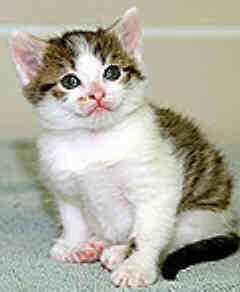 On
a February 14:
On
a February 14: 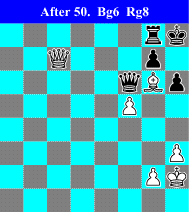
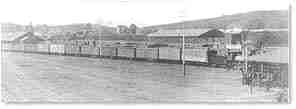
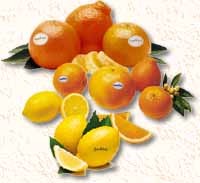 The resulting growth was astonishing. In 1880, just before the first trainload
of oranges departed, Los Angeles had 11'183 inhabitants. A decade later,
the population had ballooned to 102'479. By 1920, there would be more than
half a million residents. Los Angeles was already well on its way to becoming
the largest urban center in the American West.
The resulting growth was astonishing. In 1880, just before the first trainload
of oranges departed, Los Angeles had 11'183 inhabitants. A decade later,
the population had ballooned to 102'479. By 1920, there would be more than
half a million residents. Los Angeles was already well on its way to becoming
the largest urban center in the American West. 1862
Union ironclad gunboats attack Fort Donelson, Tennessee
1862
Union ironclad gunboats attack Fort Donelson, Tennessee  -
-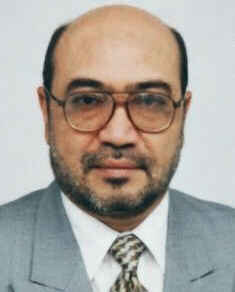 2003 Major Henry Angarita, head of the local SIJIN (Sección
Judicial y de Investigación), and at least 14 others,
including a 6-year-old girl and 8 policemen who were raiding a house in
the Villa Magdalena neighborhood of Neiva, departamento del Huila, Colombia,
where a large number of mortar shells are made to explode at 05:45 (10:45
UT) destroying also some neighboring houses. 30 are injured.
2003 Major Henry Angarita, head of the local SIJIN (Sección
Judicial y de Investigación), and at least 14 others,
including a 6-year-old girl and 8 policemen who were raiding a house in
the Villa Magdalena neighborhood of Neiva, departamento del Huila, Colombia,
where a large number of mortar shells are made to explode at 05:45 (10:45
UT) destroying also some neighboring houses. 30 are injured. 2002
Three Israelis soldiers, in a Merkava tank (the first one destroyed
by Palestinians) destroyed by a 200-kg bomb exploding under it on the Kami-Netzarim
road, as the tank was coming to the aid of a settlers' convoy headed for
the Netzarim enclave settlement that was stopped at about 21:00 by a bomb
exploding harmlessly next to an armored bus and by machinegun fire which
caused no injuries. The Palestinian Salahudin Brigade, the military wing
of the Popular Resistance Committees group, announces that it carried out
the attack. The al-Aqsa intifada body count is now at least 844 Palestinians
and 259 Israelis. About 6000 Jews live in 22 settlements in the Gaza Strip,
surrounded by a million resentful Palestinians.
2002
Three Israelis soldiers, in a Merkava tank (the first one destroyed
by Palestinians) destroyed by a 200-kg bomb exploding under it on the Kami-Netzarim
road, as the tank was coming to the aid of a settlers' convoy headed for
the Netzarim enclave settlement that was stopped at about 21:00 by a bomb
exploding harmlessly next to an armored bus and by machinegun fire which
caused no injuries. The Palestinian Salahudin Brigade, the military wing
of the Popular Resistance Committees group, announces that it carried out
the attack. The al-Aqsa intifada body count is now at least 844 Palestinians
and 259 Israelis. About 6000 Jews live in 22 settlements in the Gaza Strip,
surrounded by a million resentful Palestinians.  On February 14, St. Valentine’s Day, Capone’s hit men lured the Moran
gang to a garage on North Clark Street with an offer of buying some
high quality whiskey at a low price. After the Moran gang arrived,
the assassination squad, dressed in police uniforms, entered the garage
pretending to be police raiders. The seven North Siders, apparently
caught red-handed, lined up against the wall obediently. Moments later,
Capone’s men opened fire, killing six of the men instantly and fatally
wounding the seventh. "Bugs" Moran himself, who was late for the meeting,
spotted the assassins entering the garage in their police uniforms,
and thus was able to escape.
On February 14, St. Valentine’s Day, Capone’s hit men lured the Moran
gang to a garage on North Clark Street with an offer of buying some
high quality whiskey at a low price. After the Moran gang arrived,
the assassination squad, dressed in police uniforms, entered the garage
pretending to be police raiders. The seven North Siders, apparently
caught red-handed, lined up against the wall obediently. Moments later,
Capone’s men opened fire, killing six of the men instantly and fatally
wounding the seventh. "Bugs" Moran himself, who was late for the meeting,
spotted the assassins entering the garage in their police uniforms,
and thus was able to escape.  In Chicago, gunmen in the suspected employment of organized-crime
boss Al Capone murder seven members of the George "Bugs" Moran North
Siders gang in a garage on North Clark Street. The so-called St. Valentine's
Day Massacre stirred a media storm centered on Capone and his illegal
Prohibition-era activities and motivated federal authorities to redouble
their efforts to find evidence incriminating enough to take him off
the streets.
In Chicago, gunmen in the suspected employment of organized-crime
boss Al Capone murder seven members of the George "Bugs" Moran North
Siders gang in a garage on North Clark Street. The so-called St. Valentine's
Day Massacre stirred a media storm centered on Capone and his illegal
Prohibition-era activities and motivated federal authorities to redouble
their efforts to find evidence incriminating enough to take him off
the streets. 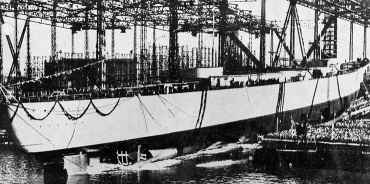
 CURVES
OF THE DAY:
CURVES
OF THE DAY: Cardioid:
Cardioid:
